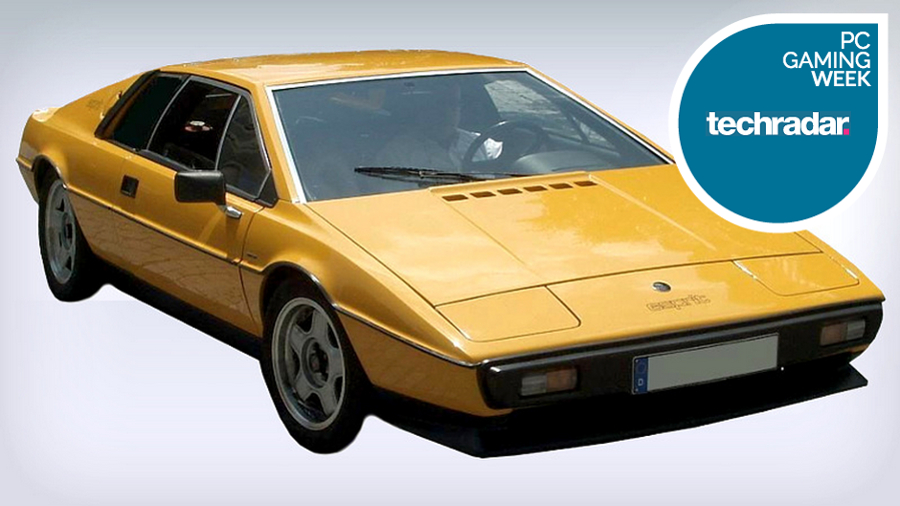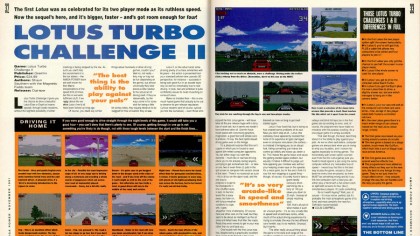How Lotus Turbo Challenge II blended arcade thrills with racing realism
Amiga Power dodged trucks and oil slicks in this 1991 review

Lotus Turbo Challenge II gave you the chance to drive a beautiful Lotus Elan or Esprit at insane speeds, through exotic locations, without the slightest possibility of either crashing or being stopped by the law. Buckle up and drift into the original Amiga Power review from 1992 below.
- Game: Lotus Turbo Challenge II
- Publisher: Gremlin
- Price: £24.99
- Authors: Shaun Southern with the Magnetic Fields team
- Release: Out now
Lotus Turbo Challenge II gives you the chance to drive a beautiful Lotus Elan or Esprit at insane speeds, through exotic locations, without the slightest possibility of either crashing or being stopped by the law.
As such you can't help but recommend it in the fun stakes – the Amiga Power team are well known for their liberal interpretations of the speed limit at times, but this is real wish fulfilment stuff. If we really drove like we drive Lotus II, we'd all have been locked up long ago.
Of course, you could say similar things about hundreds of other driving games, couldn't you? Well, no, not really – they may or may not be fun (depending on the game), but almost universally they bear precious little relation to the actual act of driving itself. If they've (deservedly, by the way) come in for some stick for being a little bit samey lately, they equally deserve to be slagged for how unrealistic they all are.
Arcade thrills
Lotus II, on the other hand, while sharing plenty of surface similarities with its peers – the action is presented from your standard behind-view, pseudo-3D perspective, for instance – succeeds in being both great fun in an arcade-style way, as well as remarkably true to real driving. In look, feel and ambition it quite confidently leaves its rivals munching on exhaust fumes.
Make no mistake then – this is one much-hyped game which actually turns out to deserve its pre-release reputation. Cynical readers (and of course, cynical journos like ourselves) – even those who enjoyed the first game – will have taken all the pre-release hype with a lorry load of road salt, but it seems we needn't have bothered after all. Gremlin have mixed speed with convincing graphics, imagination, a good feel and simple care to produce, I'd say, the best sprite-based driving game ever on the Amiga.
It's a pleasant surprise that this isn't a game in which you're forced to race against dim-witted computer opponents. You can either slog it out with the elements – much like in real fast driving, where you're not actually racing anyone, just trying to get somewhere fast – or take on one, two or even three (!) pals in the split screen or computer link version (more on that later). There's no racetrack as such – this is all out on the open road, and the only way to progress is to get to the checkpoints in time (Out Run-style, in fact).
Sign up for breaking news, reviews, opinion, top tech deals, and more.
In the first levels, this is easy-peasy, but later on, with furious weather conditions to cope with, it gets altogether more challenging. Of course there are other cars on the road, but they seem to be about as intelligent as the oil slicks and felled trees that litter the roads. Really they exist to get in your way rather than to try and beat you.

Lingering problems
One trouble with the first Lotus was that, despite being a graphically excellent drive, it was badly flawed in the crash recovery department. If you got tangled up with an obstacle, the car would slow to a halt (it wouldn't actually flip upside down though, Out Run-style) making getting back into the race a real pain because the blasted car took so long to get itself started again.
Lotus II has fixed that, but in doing so has created some problems of its own. Now you don't stop at all – Lotus (the company) have apparently insisted that none of their expensive kit gets damaged even in computer simulation (the softies) – so instead of bringing you to an abrupt halt, hitting something just makes the control go wibbly and slows you down a bit.
